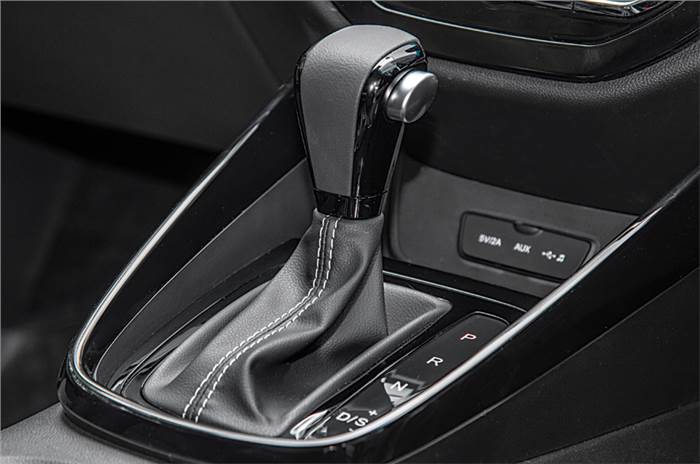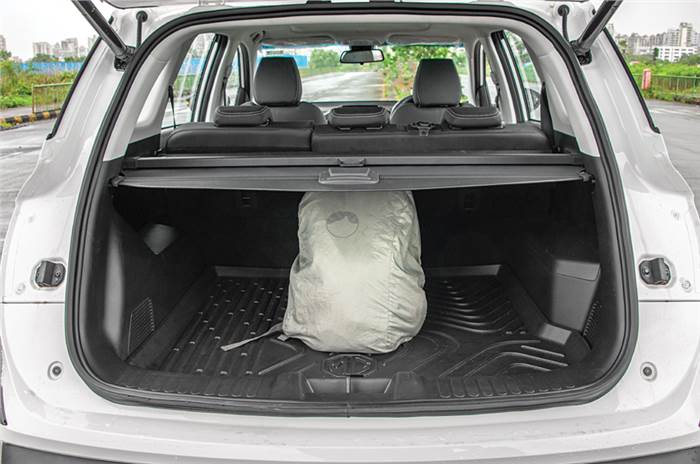2019 MG Hector review, road test
The first SUV from MG in India surely is trending. We tell you if it’s worth all the hype, with a full-fledged road test.
Published on Oct 08, 2019 05:00:00 AM
1,51,943 Views
Follow us on
There is no missing the Hector with its 4.65m length and striking design.

The Hector is offered with two engine options – a 1.5-litre turbo-petrol engine making 143hp and 250Nm of torque, and Fiat’s 2.0-litre turbo-diesel engine that develops 170hp and 350Nm of torque. The petrol engine also gets a hybrid version on all the trims but the base variant, with a 48V battery mounted under the front passenger seat. The hybrid system doesn’t increase power but you do get an additional 20Nm of electric assist for an extra shot of momentum. The diesel Hector gets just one transmission option – a 6-speed manual, while the petrol gets a 6-speed manual and a 6-speed dual-clutch automatic.
Let’s start with the crowd-favourite – the petrol-automatic, which is also the one that’s the easiest to drive. It’s remarkably quiet, too, thanks to the refined 1.5 turbo-petrol, which as you can see from our sound-level tests, is impressively quiet.

Slot the rather old-fashioned-looking gear lever into D, tap the nicely sprung accelerator pedal and the big Hector smartly eases forward without any delay. With a gentle or part-throttle prod, the engine and gearbox respond quite well and it’s not hard to understand why customers are flocking to this variant of the Hector. It’s pretty effortless to drive in the city, and in stop-start traffic, the engine and gearbox work together quite seamlessly.
| MG Hector Price, Mileage, Specifications, Features and Variants | |
|---|---|
| Brand | MG |
| Model Name | Hector |
| MG Hector Price | ₹ 16.31 - 26.39 lakh |
| MG Hector Range/Mileage | Petrol : 12.34 - 13.79kpl | Diesel : 15.58kpl |
| MG Hector Specifications | SUV | 5 doors | 5 seats View All Specs |
| MG Hector Features | LED headlight | 14-inch Touchscreen display | 6 airbags View All Features |
| MG Hector Variants | 1.5 Petrol Style MT | 1.5 Petrol Shine Pro MT | 1.5 Petrol Shine Pro CVT View All Variants |
It’s when you delve into the bottom-half of the throttle pedal’s travel that you experience the lazy
side of this gearbox. A stomp on the pedal won’t get an instant response and there’s a momentary hesitation before the gearbox shifts down a cog or two. This makes you take a more concerted approach to overtaking, especially on highways with a single carriageway, where passing traffic needs planning.
The performance figures clearly indicate that the Hector automatic is not a very quick car – it does 0-100kph in an unhurried 14.21sec. Though kickdown acceleration times are better, they are slow nonetheless, with 20-80kph and 40-100kph taking 8.04sec and 10.24sec, respectively.
You can also opt to shift manually, but in that mode, too, the gearbox is slow to respond. That said, the shifts themselves are smooth and you barely feel the car swapping the cogs.

So while the automatic variant of the Hector isn’t one you would particularly enjoy driving fast, you will appreciate it most when you’re inching along in dense traffic. It also has an auto-hold function for hill starts, which makes it even more user-friendly.
If you prefer to be in the driver’s seat, it is the manual version with the 48V battery that is better. There is still that excellent refinement from this well-insulated 1.5-litre engine, plus you get a good 20Nm extra torque for a quick getaway. A graphic in the MID tells you when the electrical juice is flowing from the motor and there’s also an indication when the battery is charging under braking.
Again, at part throttle, the Hector petrol-manual pulls ahead with enthusiasm and responds quickly to dabs of the right foot.
The gearshift is nice and precise, thanks to a well-defined gate, and helps you enjoy the drive. However, in city traffic, the clutch, with its long travel and high bite point, works your left foot; but it must be said that the pedal effort is quite light.
Flat-out acceleration is pretty good and the 0-100kph dash takes a noteworthy 12.64sec. The Hector isn’t slow or sluggish by any means, it’s just that you have to work the engine and gearbox to extract the most out of it. You will experience a fair bit of turbo lag when you stomp your right foot, and the engine gets into its stride after 4,000rpm, until the conservative 6,000rpm redline. There’s a bit of a gap between the second and third gear ratios, so you’re constantly flicking between these two cogs, especially on a winding uphill road. The overall gearing is on the shorter side and you are left wanting more grunt from the petrol motor, which spins at a high-ish 2,400rpm at 100kph in sixth gear.

The Fiat-sourced 2.0-litre turbo-diesel is an engine we are familiar with. It powers the Jeep Compass and the Tata Harrier (albeit in a lower state of tune), but interestingly, it feels the best in the MG. For starters, this engine is the most refined in the Hector. It’s impressively quiet and the gruffness you hear in both the Compass and Harrier has been filtered out. It makes a good 170hp in the Hector, which might be slightly less than in the more expensive Compass, but is 30hp more than the equivalent Harrier. Get going and here too the refinement is surprisingly nice, despite having a hint of that distinct clatter that you get on the Compass and Harrier. Performance is pretty decent as well, with 100kph from a standstill arriving in a quick 11.39sec. Like the engine, the 6-speed manual gearbox is also shared with the Compass, albeit in a different tune. The gear ratios are taller here and while that is great for highway cruising, you do tend to shuffle through the gears in the city.
Also, though the power and torque figures are identical to the Compass, the power delivery is quite different. Where the Compass gets that strong punch after 2,000rpm, in the Hector, it is a linear and progressive pull. Also, turbo lag is less prominent than in the Compass, and it’s quite clear that the Hector is the first to benefit from the latest tuning tweaks to the Fiat 2.0 diesel.
Copyright (c) Autocar India. All rights reserved.





Comments
Member Login
Personal Details
No comments yet. Be the first to comment.